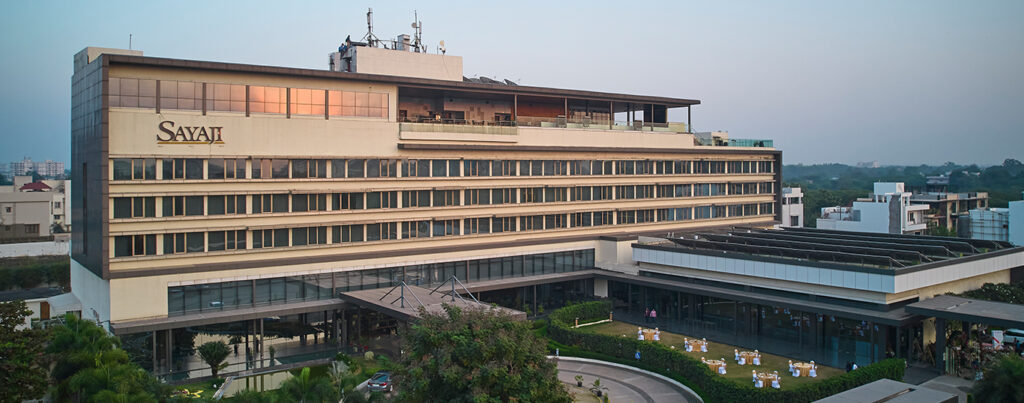Meticulously, carefully, painstakingly and the right way up. None of these brands sprang out of some great brand architecture or brilliant marketing strategies. These are built brick by brick, through hardships and by staying true to the one entity they are serving – the customer.
Each one of the brands I am going to talk about further in this article has one thing right for them, their deep roots and even deeper understanding of the markets, opportunities, trade, customers and more importantly their own shortcomings.
A brand is no longer we tell the customer it is; it is what the customers tell each other it it.
Heavy Weight or Light Weight?
Take Rajkot based potato wafer brand ‘Balaji Wafers’ for instance. With revenue of 1800 Cr., it is the second-largest potato chip brand in the country. This brand exists for over 33 years now and has been a pain in the neck for the multinational bigwigs in the Western and Central Indian markets. No one would have heard of these brands until a few years ago. You would not have seen their ads on television or in print. So how did this happen? How have they become so big that even PepsiCo wanted to ‘share’ their success? They got their three ‘Ps’ right. Good quality and good tasting product. A great distribution network with 700 dealers and over half a million retailers. But more importantly they got one thing bang on – the consumer psyche and expectations. In a market where the customer always felt cheated by the ‘large pack small quantity’ by the leading brands, they offered more quantity and capitalised on the consumer’s value perception. This weight proved heavy on the leading MNC brands and swept the customers away. What Balaji offered was as a brand – ‘More Value’ to the customers.

Twinkle Twinkle Little Star
Another such example is Sayaji Hotels. A hospitality brand with its roots in Baroda (Gujarat) but got its wings from Indore (in Madhya Pradesh). You’d recognize it better as the parent brand of ‘Barbeque Nation’ restaurant chain (shocked?). The brand has changed the way star hospitality was looked upon in Indore. 20 years on, it is still a benchmark as well as the toughest competition for brands like Radisson and Marriott. What did they do? They simplified ‘star hospitality’ to the simple folks of a small town, who were otherwise intimidated by the highly decorated, English speaking front desk executives with measured smiles at the star hotels. They opened their arms and hearts to people. Everyone felt welcomed at Sayaji. But that does not mean they compromised on services. In fact, Sayaji was the first hotel in India to have i-Pod managed rooms. They laid heavy emphasis on training their staff in soft skills. They offered chauffer driven Mercedes services to its guests that even Taj could not do at that time. Later they elevated this to a Rolls Royce. The brand positioned itself as passionately ‘caring’ and ‘human’ hospitality brand. They live by their brand promise ‘Yours Truly’, so much so that a rollup banner in the lobbies across their 8 properties says ‘Don’t tip us. We are yours truly.

Driven by Consumers
Another example is that of an edible oil brand called Engine. Headquartered in Bharatpur (Rajasthan), the brand has a strong presence in Northern, North-Eastern, Central and Western India. and has a turnover in tune of 500 Cr from its flagship Engine Mustard Oil. The brand has engaged in very sporadic brand and communication activities. Their emphasis has always been on quality of product and great network relationship. And who’s driving this engine? The consumers, that too while paying more for it. Believe it or not Engine Mustard Oil sells Rs. 5-10 costlier than all the brands present in the market. Customers swear by its purity and quality. Riding high on consumer’s confidence and network’s backing, the brand has already entered other edible oil segments as well as staples.

There are hundreds of such brand stories arising out of smaller towns in nearly all consumer business segments. Each one is a true testimony of brand building from scratch. Each taking painstaking decades to transition from the promoter’s vision to the consumer’s recommendation. They’ve got their product, place and pricing on the penny but more importantly, they’ve got their relation with their ecosystem bang on.
To begin with, these brands arise out of a very strong value system. One that resonates with their target audience, because in the majority of the cases, their promoters come from amongst them. Their ‘dots’ are connected in a straight line. A value chain fortified with a ‘humane’ relations with all stakeholders. The promoter’s relation with the channel partners and their relation with the customer and last but not the least the consumer’s own network. That’s what makes these brands more ‘human’. People connect with them as strongly as they connect with the people behind them.
And how do they communicate? You’d seldom see these brands coming out with start-studded campaigns to sell. They are sold by people. Those who believe in the brand’s value delivery. A strong advocacy right from the dealers to consumers is the backbone of these brands. These brands have achieved this by simply adhering to the basics.
Brands are not built in small towns, they are lived by everyone associated with them, including their customers.
